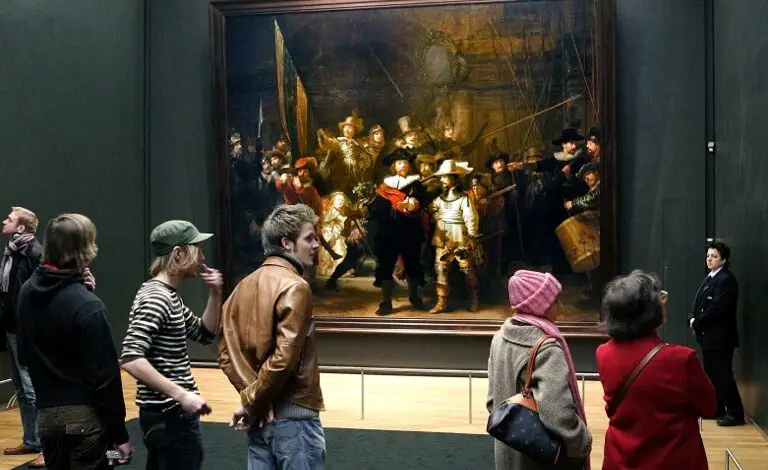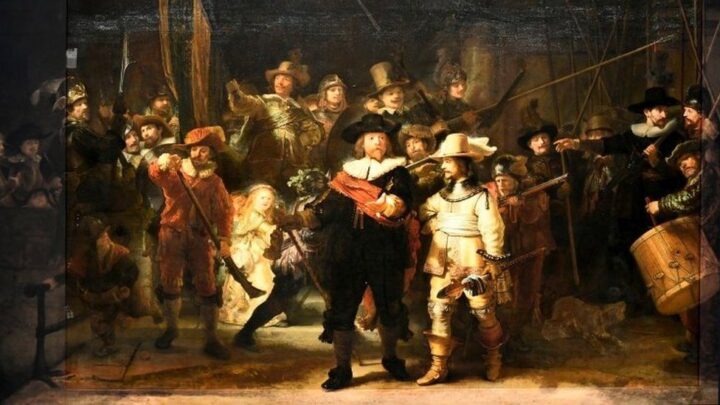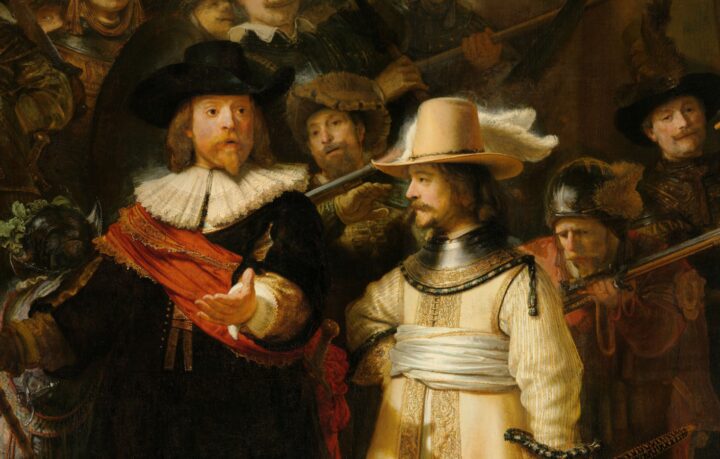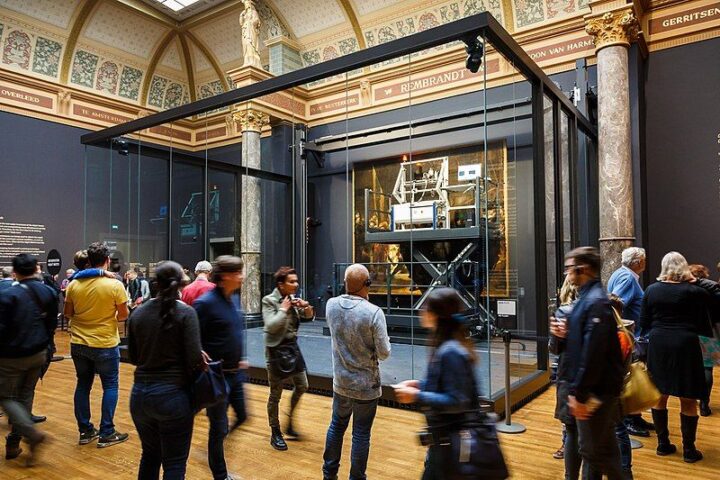The Story Behind The Night Watch Painting

If there is something that can create memories, stir up emotions, or cultivate a thought, it is art. It has the power to capture futuristic imagination on the one hand and to instigate a revolt on another. Top artists have celebrated the world over for this very reason.
During the 1580s, there was a golden era in the Netherlands that lasted until the late 1600s. It was during this time that a painter called Rembrandt Harmenszoon van Rijn came into prominence. His style and work differed from that of his contemporaries. He was more into self-portraits and portraits of biblical, allegorical scenes, among other varieties of genres.
Rembrandt’s artwork had gained fame all over Europe. He was known as the Master of Visual Arts. However, there was one painting that stood out – The Night Watch. It is still well preserved in the Amsterdam museum and regarded as one of the best of the Dutch Golden Age.
The Night Watch

At the onset, one can be overwhelmed by the size of the painting. More prominently, one can notice the application of tenebrism – playing with shadows and lights. Also, Rembrandt has tried to capture movement through it is stand-still imagery.
Rembrandt has toyed with the customary symbols in the painting, where the lady in yellow on the left-hand side is holding the key emblem. She is a woman of power and rank. The soldier in front of her is wearing headgear, a cultural decoration of the soldiers from the past. The color yellow is a symbol of triumph in the conquest. This vivid painting in oil-based form brings out the character of the true conquerors.
Background Story
This artwork was first commissioned in 1639 by Captain Banninck Cocq to honor his guards. The drummer on the extreme right was appended to the masterpiece much later and that too, free-of-charge. The above picture is the modified version to accommodate more characters as per request.
Exactly 34 guards can be seen in the artwork. Rembrandt was paid a staggering 892 U.S dollars in the local currency back then! Interestingly this cost was divided amongst each soldier. Every guard paid around 55 U.S dollars to be captured forever on the canvas! There were more orders placed by the military to other artists at that time.
Many thought that the timing of the artwork order, its creation, and the display of the same in the main banquet hall of the Musketeer’s meeting hall was planned to welcome the exiled queen of France with much-anticipated grandeur.
Changes & Relocations
Initially, the painting was hung at the Great Hall in Amsterdam, The Netherlands. By 1715, the artwork was taken to the Amsterdam Town Hall, and due to space constraints, the painting was trimmed! Due to this fact, two of the characters in the masterpiece were lost from this artwork. However, one can find the same work in London in its original form.
During the reign of Napoleon Bonaparte, the painting was moved a lot to different locations. However, by the end of his reign, it was kept back in the Rijks museum and restored as in its older days. Unfortunately, during the second world war, this work was moved to a safer location, only to be restored in its glory post the war.
Once again by the end of 2003, the masterpiece was moved to an interim location due to refurbishment reasons. Fortunately, even in such utter pandemonium, the painting retained its beauty in full glory without any loss to the artwork itself.

Hooliganism
As an interesting story, for most of the display of this painting, it was coated with a dark varnish from which it derived its name – The Night Watch. However, a random jobless person on the streets vented out his anger over the painting by trying to make a scratch with his knife, simply because he couldn’t find work! Luckily no damage took place, and the varnish was thick and protected the artwork!
Another similar incident took place in 1975 when a random person known to have mental health issues at that time tried to vandalize this masterpiece. When caught, he proclaimed that it was ordained by the Lord Jesus! He wasn’t punished for this act as he took his own life eventually. Upon close examination, one can see the damage done to the painting!
Refurbishment

Eventually, in 2019, the much-needed refurbishment took place in public and it was live-streamed over the internet. Hence, you see the picture in public display with people around it. One can see that the work is done, one pigment and one layer at a time. This process was worth it, given the attacks and movements of the masterpiece over the years.
Conclusion
With such an interesting and chequered past behind the night watch artwork, one should wait to order a custom piece for the home. The 1st-art gallery.com can not only recreate this work for you but also help you choose the right size for your living room hall, to glorify it with the touch of the Dutch Golden Age!

